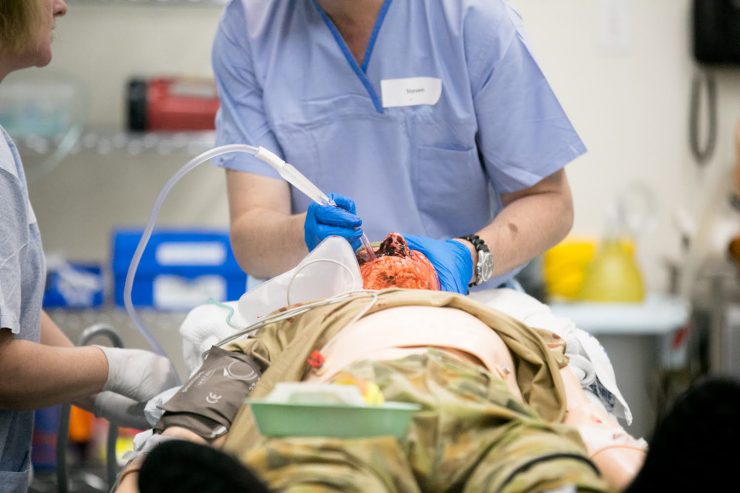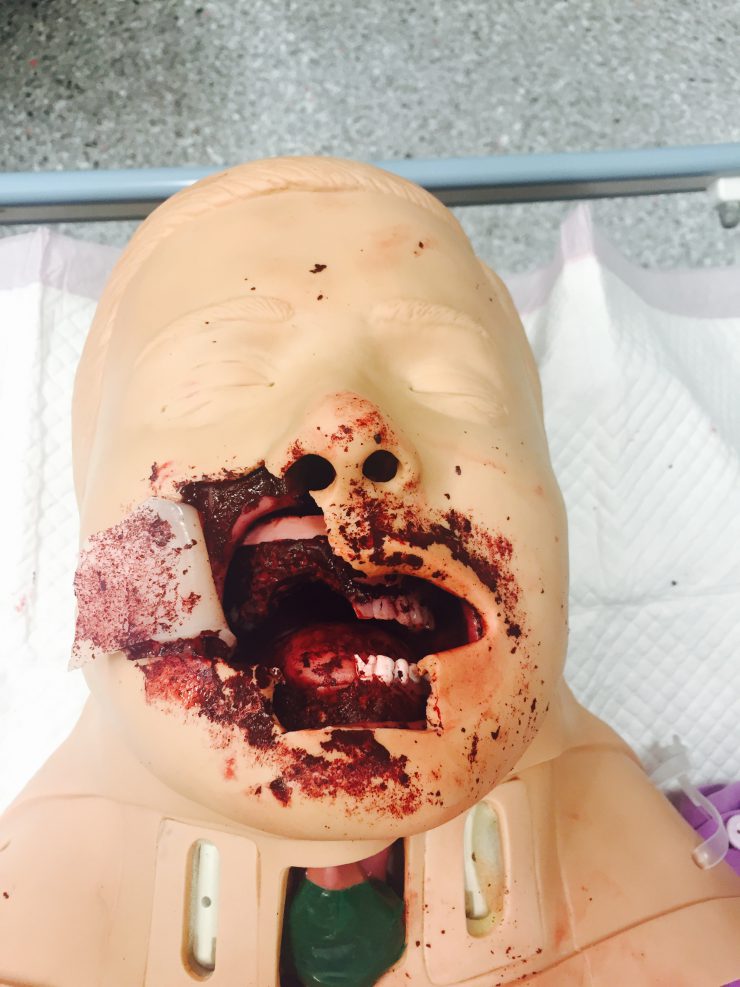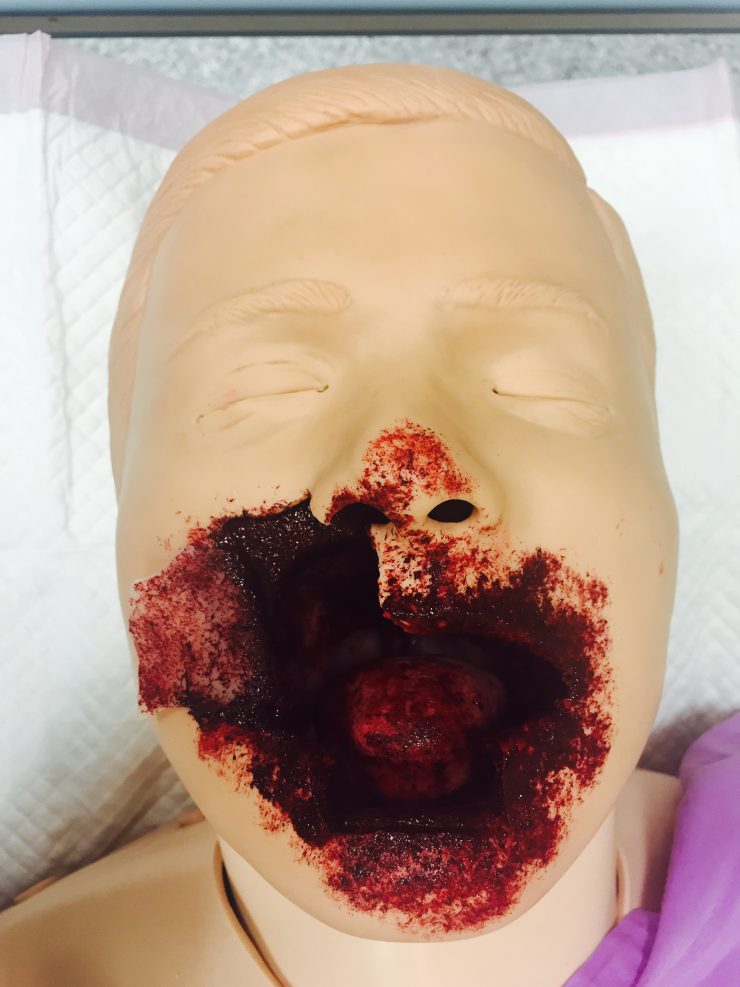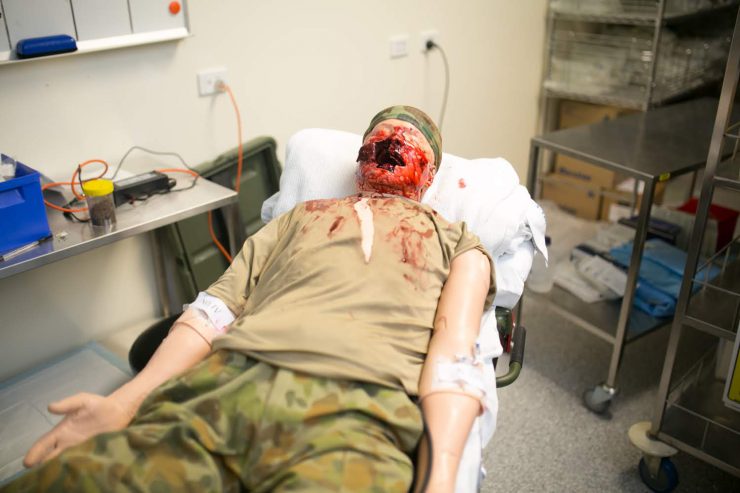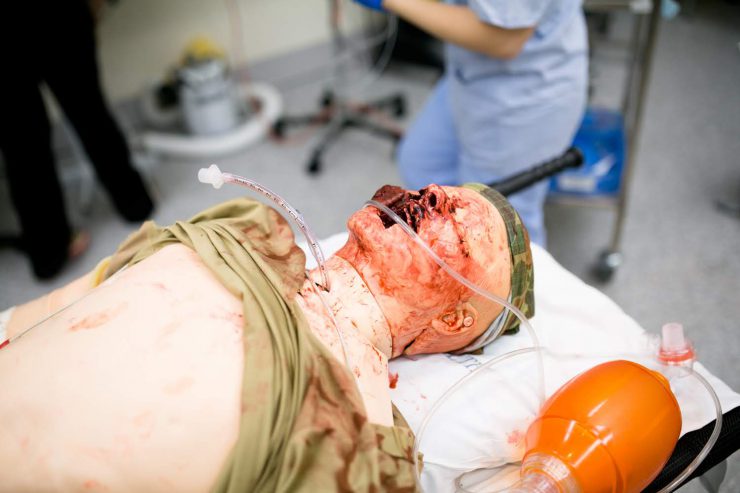Simulating a self-inflicted facial gunshot wound with moulage to improve perceived realism, immersion, and learning in simulation-based airway management training.
Warning: disturbing images.
CSDS received great news recently! A short report submission to BMJ Journals has been accepted for publication. The report is based on the simulated scenario of a facial gunshot wound, using moulage to improve perceived realism and immersion.
CSDS would like to congratulate Dr Chiara Santomauro, Daniel Host, Davin Arthur, Marissa Alexander, and Colin King.
The report is currently available to download for free as an “online first” publication. BMJ Simulation & Technology Enhanced Learning will then publish the report in a future journal issue.
View the full report on BMJ Journals.
This short report includes:
- what is moulage
- why it is used in simulation education
- steps used to re-create this specific moulage for simulation
- formal evaluation of the simulation gunshot wound and discussions.
Initially, CSDS developed the scenario and moulage technique for part of a medical training event for the Australian Defence Force. It was believed that the intensity of a simulated facial gunshot wound in the training exercise had the potential to evoke a true emotional response. The realistic nature of the injury influences the decision making for airway management and contributes to the learning objectives of the scenario.
With the successful outcome of the original event, CSDS has adopted the scenario as a regular fixture on our Anaesthetic Crisis Resource Management (ACRM) course. Facilitators of the course have consistently observed the same impact on the participants. They appear visibly taken aback with the first view of the manikin. Participants display caution, and apprehension when examining and manipulating the airway, they exhibit marked panic when managing the compromised airway.
Congratulations to all involved in the development of the technique and the publication of the report.


